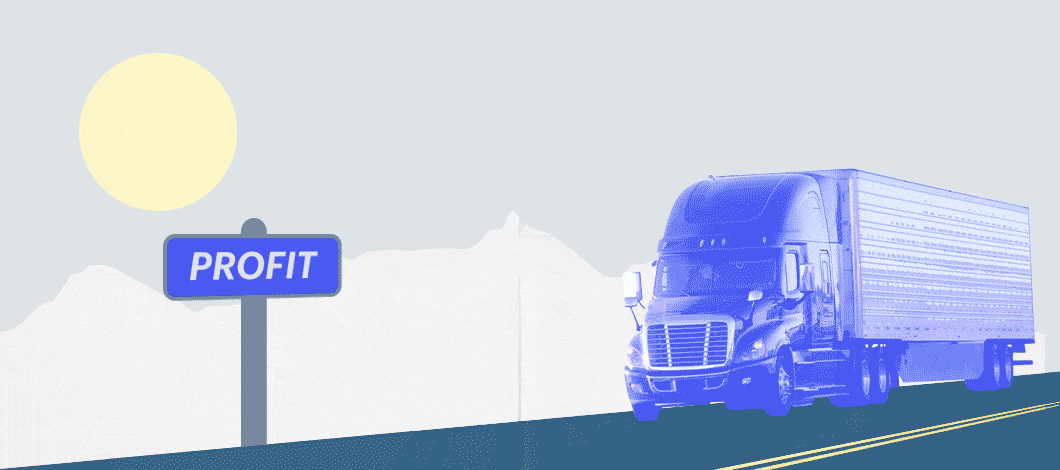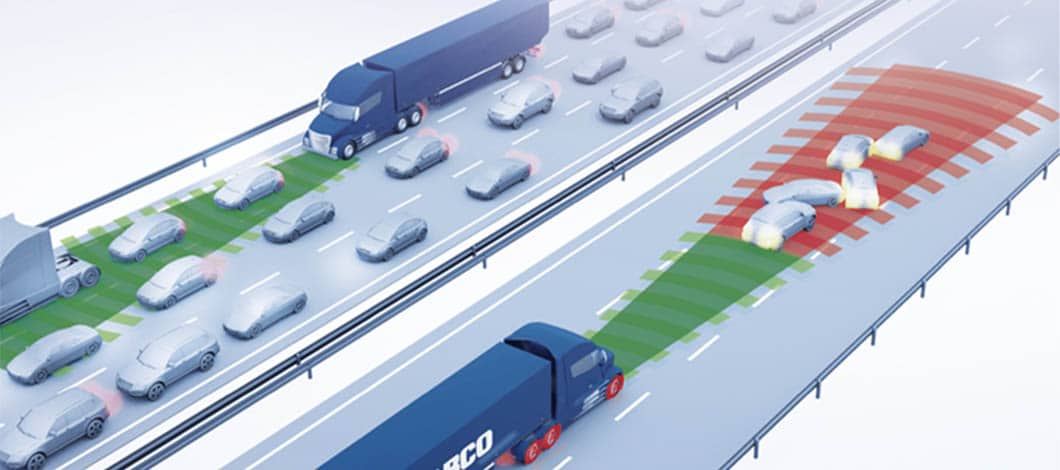Trucking technology can help you increase your profits while improving safety.
Here’s a look at 12 top technologies for truckers. We’ll review tech that can help you find business, run your operations more efficiently and cut costs. We’ll also consider technology that can help keep your drivers safe, avoid insurance liability and evaluate driver and fleet performance.
1. Digital Freight Matching
Digital freight matching apps represent an exciting innovation in transportation industry technology that can help trucking companies increase revenue.
As much as Uber pairs passengers with drivers, digital freight matching technology automatically pairs shippers with carriers, making it easier for you to find business. Shippers and drivers can connect based on criteria such as truckload capacity, dates and routes.
Leading digital freight matching apps include Convoy, Uber Freight and uShip.
2. GPS Apps
For truck drivers, using Global Positioning System (GPS) technology is more complicated than it is for car drivers. You have to know which roads are accessible for trucks, where you can refuel and where you can stop for a meal or rest.
Apps such as Trucker Path feature GPS tools specially designed to meet the unique needs of truck drivers.
3. Dynamic Routing
A GPS app can help you plan a route, but you may need to adjust to conditions such as weather, repairs or traffic jams. Commercial truck technology featuring dynamic routing helps you factor in these types of adjustments to find alternate routes automatically and quickly.
Use a truck navigation app with dynamic routing capability such as CoPilot to adjust to real-time traffic and weather conditions so your trucks can get where they’re going faster and more easily.

4. Telematics
Telematics combines telecommunications technology with informatics, the study of computer systems used to store and retrieve information. It encompasses GPS and dynamic routing, but it goes beyond them by enabling fleet managers to perform tasks such as tracking drivers and containers.
Telematics providers such as Samsara offer apps to help fleet managers deploy vehicle and shipment tracking.
5. Platooning
One important application of telematics is coordinating the movement of groups of trucks automatically, a practice known as platooning. Platooning lets you communicate with multiple trucks and coordinate them in formations, reducing wind resistance and traffic conflicts and increasing your efficiency, while also improving road safety for nontruck vehicles.
Platooning app providers, such as Peloton Technology, can help you organize fleets of vehicles more efficiently.
6. Fuel Price Apps
Fueling is one of the major expenses for trucking companies. Fortunately, fuel price apps such as GasBuddy can help you cut costs by comparing pump prices automatically.
Some apps such as Trucker Path include features which help you verify that a fuel pump has enough clearance to accommodate trucks. When using price comparison apps, to maximize your fuel savings, choose a base jurisdiction with a low gas tax rate, so that no matter where you refuel, you pay less for taxes.
7. Vehicle Maintenance Apps
Keeping track of vehicle inspection and maintenance schedules can be tedious, but forgetting important maintenance tasks can hurt your performance and cost you money. Older technology managed these tasks through spreadsheets and fleet software, but the latest truck inspection and maintenance software uses the cloud to automate routine task scheduling.
Apps such as Fleet Rabbit let you automatically generate PDF inspection reports, generate 1-click work orders based on inspections, schedule inspection and maintenance reminders and perform other important tasks.
8. Electronic Logging Devices
Monitoring driver hours is critical for safety and compliance with federal regulations administered by the Federal Motor Carrier Safety Administration (FMCSA). The FMCSA now requires most trucking operations to be monitored by electronic logging devices (ELDs).
These are hardware devices that plug into vehicle onboard diagnostic ports and work in conjunction with trucking safety software to gather and analyze data about driver hours and other vital information such as vehicle engine, location, speed and mileage. Suppliers such as Matrack provide ELD devices you can use to log driver hours and meet safety requirements.
9. Collision Mitigation Systems
Collision mitigation systems use technology such as radar to provide early warnings of potential rear-end collisions. Systems can detect moving, stopped and stationary objects, send warning signals which drivers can see, hear and feel, and automatically activate braking systems or cruise control to maintain safe driving distances.
Leading providers of collision mitigation technology include WABCO.
10. Forward-Looking Camera Systems
When collisions between trucks and smaller vehicles occur, the driver of the smaller vehicle is often viewed as the victim, even if they’re actually at fault. Front-facing dash cams combine cameras with sensors to record events and provide instant notifications to fleet managers, providing evidence that can be vital for insurance claims.
Providers such as SureCam supply forward-looking camera systems to truck drivers.
11. Driver Scorecards
Monitoring driver performance is essential for addressing safety concerns as well as identifying top drivers. Driver scorecards are automated systems that leverage GPS and telematics data to use key performance indicators to track driver behavior.
The information can be used to spot risky behavior and intervene with drivers who need additional training. It also can be used to spot outstanding drivers so you can utilize your best personnel efficiently and reward them for superior performance.
In addition to tracking actual performance, you can set performance goals in areas such as safety, productivity, vehicle maintenance and regulatory compliance. Providers such as Geotab supply driver scorecard systems.
12. Fleet Management Apps
While driver scorecards let you track individual driver performance, fleet management apps let you track and optimize the performance of your entire fleet. You can track key numbers such as:
- Mileage
- Hours
- Fuel
- Service costs
- Average cost per mile
Doing this can help you identify inefficiencies that need attention.
Fleet management apps also include features for tracking vehicle and equipment details, automating maintenance scheduling and integrating telematics data with other apps and data in your system. Apps such as Fleetio serve as powerful tools for optimizing fleet performance.
Adopt Trucking Technology to Gain a Business Advantage
Today’s trucking technology includes tools to help you:
- Find shipping loads
- Run your operations more efficiently
- Save costs on fuel, improve safety
- Avoid insurance liability
- Evaluate driver and fleet performance
Innovative transportation companies are leveraging these technologies to gain an edge on the competition.
Keeping up with the latest trucking technology trends can help you stay competitive and pull ahead. Consider whether investing in the technologies discussed here might help your business.
If you need financing to upscale your trucking technology, take a few minutes to fill out our free, no-obligation online prequalifying application and find out what financing options may be available to you.











